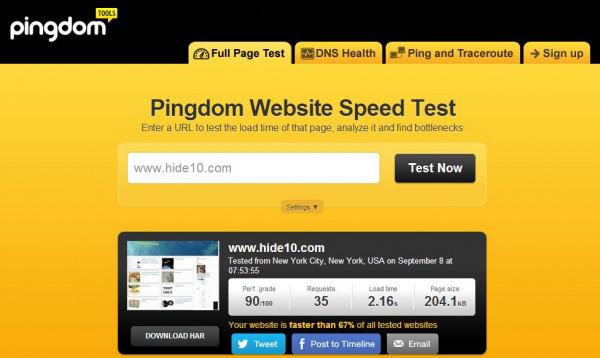Using Site Speed Accelerator
Activating Ezoic's Site Speed Accelerator enhances your website's performance. The first step is to enable the Site Speed Accelerator in Ezoic's Speed dashboard, which allows you to integrate Ezoic's CDN.
Next, enable Ezoic's caching app and activate the CDN. Enable the override cache-control headers option to prevent cache conflicts caused by hosts or plugins.
Deactivate redundant plugins like WP Rocket and ShortPixel to avoid conflicts with Ezoic's optimization. Disable other plugins that handle caching and optimization, as Ezoic will handle these tasks.
Enable the Site Speed Accelerator for all devices, create a new version, activate recommended settings, and preview your site in Chrome Incognito mode. Check Google Pagespeed Insights to see if there is a speed improvement. Clear Ezoic cache if any issues arise.
Ezoic's free Site Speed Accelerator includes features like:
- Intelligent caching
- Lazy-loading images
- Minifying HTML
- Pre-configuring DNS prefetching
Disabling costly plugins and using this tool can save resources and improve site speed.
The Site Speed Accelerator also handles CSS and JavaScript minification and deferral. It unloads unnecessary CSS and defers JavaScript files to improve load times without affecting user experience. These optimizations are integrated directly with Ezoic's CDN.
Image optimization is another key feature. Ezoic's tool automatically converts images to next-gen formats like WebP, reducing file sizes without compromising quality.
Lazy-loading of images and iFrames is also enabled, which saves bandwidth, especially on mobile networks.
Browser caching can be configured to store content locally for returning visitors, providing a faster loading experience.
Ezoic's Site Speed Accelerator removes unused CSS, reducing code clutter and streamlining the delivery of essential assets. Font optimization features ensure efficient font loading.
To maximize revenue with Ezoic's Ad Tester, enable the "Maximize Your Site's Revenue" feature, which manages anchor ads to increase visibility without overwhelming users.
AdSense users can link their account with Ezoic to create better competition for ad slots, potentially leading to higher revenue.
By implementing these strategies, site speed can improve significantly and potentially achieve better Core Web Vitals scores. Allow 30-60 minutes for new settings to take full effect.
Deactivating Conflicting Plugins
Deactivating conflicting plugins is crucial for optimizing site performance with Ezoic. Plugins like WP Rocket, ShortPixel, Asset Cleanup Pro, SG Optimizer, and OMGF can interfere with Ezoic's optimizations by duplicating processes or causing conflicts.
To deactivate these plugins:
- Go to your WordPress dashboard
- Locate the plugins section
- Find the conflicting plugins
- Deactivate them
This prevents them from slowing down your site.
After deactivation, test your site using tools like Google Pagespeed Insights and preview it in Chrome Incognito mode to ensure that no site elements have been disrupted and to check for any speed improvements.
By removing these extra plugins, you avoid redundant tasks and potential conflicts. Ezoic's Site Speed Accelerator can efficiently handle image optimizations, caching, and script minifications, streamlining your site's operations and improving speed and user experience.
Implementing Caching Strategies
Caching is a powerful strategy for speeding up your site. It involves temporarily storing copies of your web pages' content, reducing the time needed to load them for subsequent visitors. Ezoic's caching app makes this process simple.
To enable caching:
- Go to your Ezoic dashboard
- Find the "Leap" section
- Navigate to "Caching"
- Activate Ezoic's caching app
This integration allows Ezoic's Content Delivery Network (CDN) to store and serve cached versions of your website, significantly reducing page load times.
To prevent conflicts with existing cache-control headers from your host or other plugins, enable the "Override Cache Control Headers" setting. This ensures that Ezoic's rules take precedence, eliminating conflicts between different caching policies that can slow down your site.
Review and edit your caching settings as needed. Ezoic's caching app intelligently determines optimal caching durations and purging rules based on real-world user engagement and behavior on your site.
While caching is excellent for delivering static content quickly, dynamic pages, such as those personalized for logged-in users, require more flexibility. Ezoic's caching accommodates these nuances, ensuring that custom pages refresh as necessary without sacrificing overall site speed.
After configuring the caching app and override settings, test your site by loading it in incognito mode on different browsers and rechecking metrics using tools like Google PageSpeed Insights. The goal is for pages to load with minimal delay, confirming that your caching setup is effective.
Implementing these caching strategies enhances speed and improves your site's SEO, as faster sites tend to rank higher in search results. By consolidating caching efforts into Ezoic's powerful toolset, you ensure faster load times for users and lower overhead for your servers.

Testing and Optimizing Site Speed
Testing and optimizing site speed is an ongoing process that requires a consistent approach. Regular assessments using reliable tools ensure that your site remains fast and performs optimally for your users.
Use Google Pagespeed Insights for comprehensive evaluations. This tool helps determine your site's performance metrics, identifies slow-loading elements, and provides actionable suggestions for improvement. Test both desktop and mobile versions of your site to get a complete view of its speed and functionality.
Ezoic's Leap feature provides additional insights beyond basic speed metrics, offering detailed Core Web Vitals reports and personalized recommendations. Access Leap through the Ezoic dashboard to track critical metrics like:
- Largest Contentful Paint (LCP)
- First Input Delay (FID)
- Cumulative Layout Shift (CLS)
Use the insights from Leap to focus on specific areas that need improvement. For example, if your site has a high LCP, investigate large images or heavy resources that may be delaying the first meaningful paint. Leap will guide you through these optimizations, ensuring that your efforts are targeted and effective.
Regular testing is not just about identifying issues but also about implementing effective solutions. Apply the recommendations provided by these tools and retest to fine-tune your optimizations and confirm that each adjustment improves performance.
Website performance can vary due to updates, new content, and external factors, so it's essential to establish a periodic review routine. Weekly or bi-weekly tests are a good practice to maintain. This proactive approach helps identify and address potential slowdowns, ensuring a consistently good user experience and maintaining SEO rankings.
Incorporate site speed tests into your website's maintenance schedule, just as you would regularly backup your site or update themes and plugins. Consistent testing ensures that your site continues to meet and exceed performance expectations.
Comparing test results over time provides insights into trends or recurring issues. Maintain a record of these results and the actions taken to create a knowledge base that can help you quickly address similar problems in the future.
In summary, regularly testing and optimizing site speed using tools like Google Pagespeed Insights and Ezoic's Leap feature is crucial for continuously improving your site's performance. This consistent approach, combined with actionable insights and periodic reviews, creates a foundation for a fast website that delivers an excellent user experience and maintains a competitive edge in search engine rankings.

- Google. PageSpeed Insights. Mountain View, California: Google; 2010.
- Ezoic. Leap: Core Web Vitals Optimization. Carlsbad, California: Ezoic; 2021.